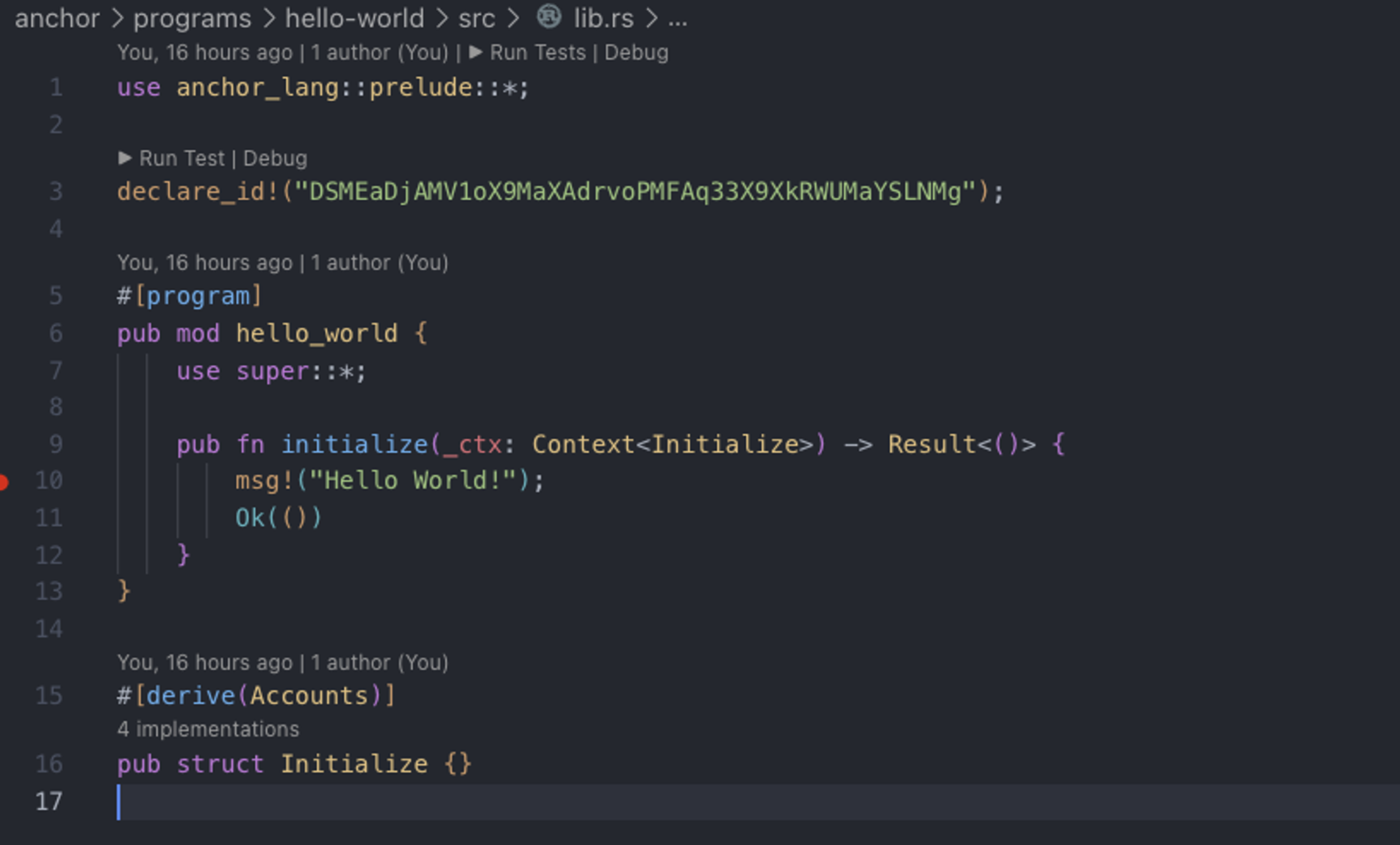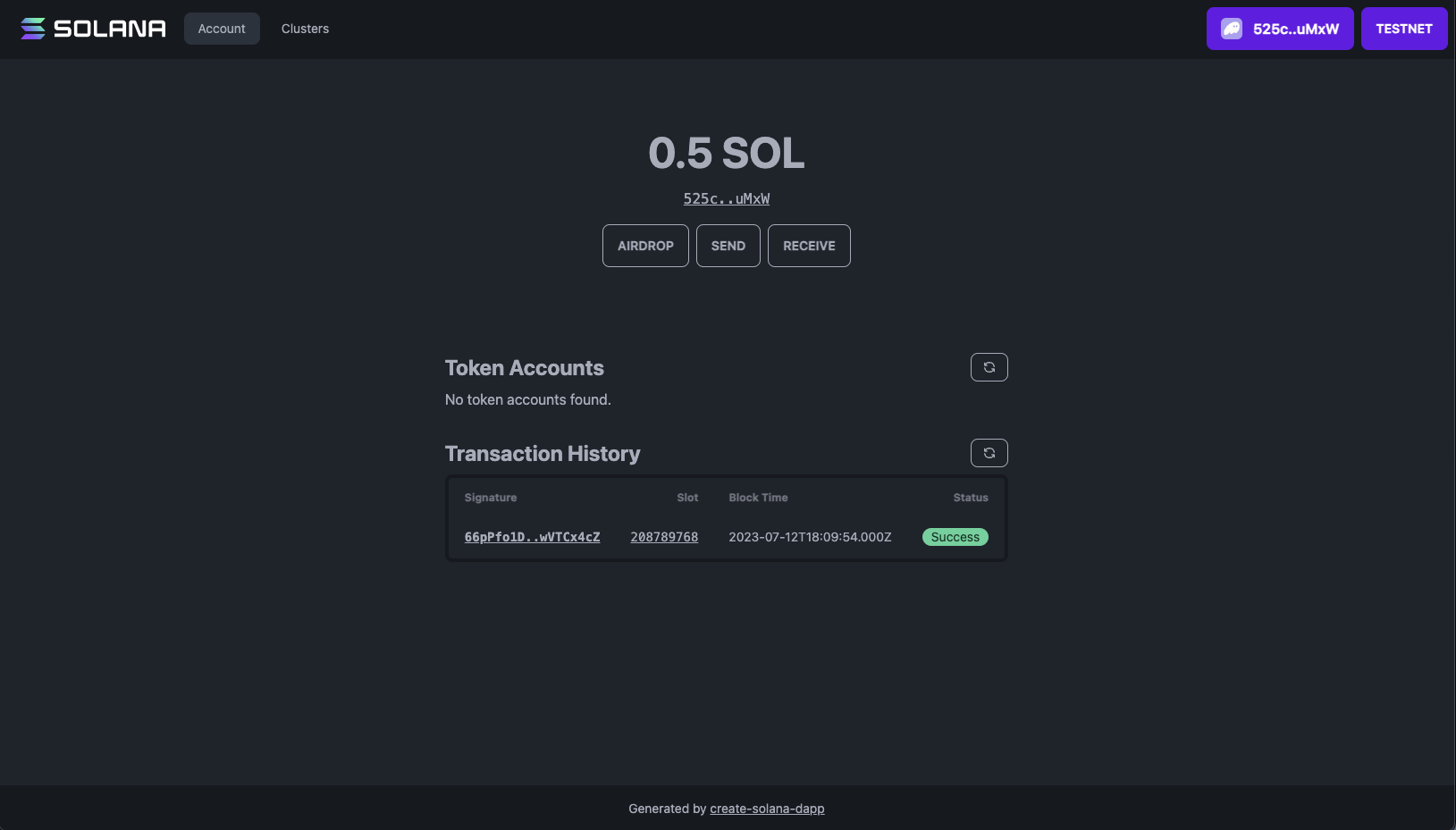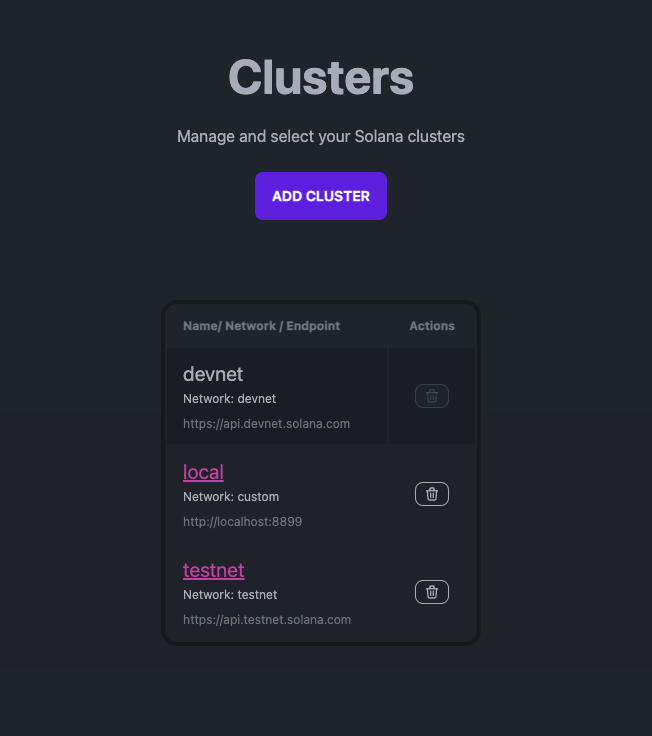If you have an idea to build on Solana or you want to participate in a Solana hackathon, this scaffolding guide can help you get a boilerplate codebase with important things like the Solana wallet adapter, web3.js, and Anchor, saving time and resources and providing a great foundation in further development.
This guide has four sections
- Requirements
- Scaffolding
- Experience hands-on with scaffolds
- Bonus Solana tools
1) Requirements #
NodeJS and npm #
Install NodeJS, to get node (Javascript runner), npm (package manager) and npx (node package executor) all at once.
Code Editor #
We recommend installing VSCode, but you're also welcome to use your preferred editor.
Solana development environment #
If you haven't installed Solana CLI, Rust, or Anchor before, you can easily do so by following our helpful installation guide
This scaffolds only supports TypeScript for now, but don't worry, TypeScript simply extends on the JavaScript you already know to add helpful type definitions.
2. Scaffolding #
To create your boilerplate, run:
npx create-solana-dapp@latestProject name #
To create your boilerplate, run: I suggest you do this in the root folder where you want to create your project. First, you will be asked to enter your awesome project name. I am using hello_solana for now.
┌ create-solana-dapp 2.0.1
│
◆ Enter project name
│ - hello_solana
└Web preset #
Then you will be asked for a preset to use, which could be Next.js or React + React Router DOM
This document uses Next.js because Next.js has file-based routing and app routing, but you can also use React + React Router DOM if you prefer that.
◆ Select a preset
│ ● Next.js
│ ○ React + React Router DOMUI library #
After you pick a framework, you'll be prompted to select a styling library.
◆ Select a UI library
│ ○ None
│ ● Tailwind
└We use Tailwind CSS and Daisy UI here, but you can choose none if you already have your preferred one.
Anchor Template #
Next, this scaffold CLI asks which template for anchor you want to use. Anchor is a framework for writing on-chain Solana programs.
◆ Select an Anchor template
│ ○ counter
│ ● hello-world
│ ○ none
└Then make some popcorn to eat while the scaffolding installs - it should take ~3 minutes.
◓ Creating new workspace with npm...When it's finished, change the directory into your project:
◇ Successfully installed preset @solana-developers/preset-next@2.0.1.
│
└ Run `cd ./hello_solana-app` to get started.type pwd to check if your path is correct, then type code . to open VSCode
inside the scaffolded project.
In your scaffold, five scripts are waiting for you to execute whenever you like.
Type npm run to see all the scripts available.
Scripts available in @counter-app/source@0.0.0 via `npm run-script`:
anchor
nx run anchor:anchor
anchor-build
nx run anchor:anchor build
anchor-localnet
nx run anchor:anchor localnet
anchor-test
nx run anchor:anchor test
build
nx build web
dev
nx serve webTo run any of these scripts, type npm run <SCRIPT>, for example, npm run dev
to start the development server of your website or npm run anchor-test to run
tests on your scaffolded Solana program.
3. Experience hands-on with scaffolds #
Anchor программа #
Before starting, please initiate your project with git init to track the changes you make. Here is what our directory tree looks like at the root of our project.
hello_solana
|
├── anchor
│ ├── migrations
│ ├── programs
| | └── hello_world
│ └── tests
├── web
│ ├── app
│ ├── components
└── publicInside anchor {'>'} programs {'>'} hello-world {'>'} src {'>'} lib.rs, we can start writing
our instructions.
To build this program execute npm run anchor-build. Your Anchor project will
be built, and an IDL generated in the target folder. IDL is a spec that
describes the instruction handler in your program and their arguments. Copy the
address inside metadata from your hello_world.json to the program_id section
in your Anchor program's lib.rs.
You can now run Anchor tests and check if your program is running successfully.
 Anchor Hello World Code Screenshot
Anchor Hello World Code Screenshot
hello_solana
|
├── anchor
│ ├── migrations
│ ├── programs
| | └── hello_world
│ └── tests
| | └── hello-world.spec.ts
│ └── target
│ └── idl
│ └── hello_world.jsonTo test hello_world instruction, execute npm run anchor-test.
PASS anchor tests/hello-world.spec.ts
hello-world
✓ Is initialized! (686 ms)
Test Suites: 1 passed, 1 total
Tests: 1 passed, 1 total
Snapshots: 0 total
Time: 1.207 s
Ran all test suites.
————————————————————————————————————————————————————————————————
> NX Successfully ran target jest for project anchor (3s)NextJS app #
 NextJS Starter view
NextJS Starter view
Our NextJS Scaffold uses using App Router introduced in version 13, which supports shared layouts, nested routing, loading states, and error handling.
hello_solana
|
├── anchor
├── web
│ ├── app
│ │ └── layout.tsx
│ ├── components
│ └── solana
| └── solana-provider.tsx
│ ├── ui
└── ui-layout.tsxThe solana-provider.tsx already has all the wallet features you need, It
handles auto connects of Solana wallet easily, and you can move to multiple
components of your web application with the wallet states managed. This NextJS
app is using @tanstack/react-query to
fetch, cache, synchronize, and update server state in your web applications
easily. React-Query here is used for all the data fetching needs, like a hook
for useGetBalance to get the balance of your wallet, useTransferSol to
transfer sol. Similarly, you can implement features you want to fetch from RPCs.
You can see react-query getting used here in the Account nav as well.
 NextJS web Accounts view
NextJS web Accounts view
This app also uses Jotai, which is used for global React state management in
your NextJS app. Our component stores the cluster and RPC information, you can
fetch it anywhere in your app and manage where the transaction needs to be
submitted.
 NextJS web Clusters view
NextJS web Clusters view
Copy your generated IDL file and/or Types from the target folder after the
anchor build and import it to use inside components to call instructions.
4. Bonus Solana tools #
This is just a bonus section if you want to use more tools built by the Solana community to ease your Solana development, just be careful those might not be audited and/or maintained. Checkout Solana Tools Library
Helpers by Solana Developers contains helper functions that can help you get an airdrop for testnet devnet, making Error messages by Solana more readable and a lot more.
Solana Wallet Names by Portal Payments
can help you use Solana wallet names like .sol, .backpack, .abc etc.
Amman by Metaplex is a set of tools to help test Solana SDK libraries and apps on a locally running validator.
Solita by Metaplex Solita generates a low-level TypeScript SDK for your Solana Rust programs from the IDL extracted by Anchor or Shank.
Поздравляем! You have reached the stage where you can finally bring your project to life just the way you want it. We're excited to see what amazing things you'll create! Have fun building on Solana.